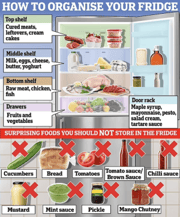What are ‘good’ and ‘bad’ debts, and which should I pay off first?
- Replies 2

Peter Cade/Getty Images
With the cost of living soaring and many struggling to get a pay rise, it’s not surprising people are using debt to navigate life’s financial twists and turns.
Owing money can sometimes feel challenging, but not all debts should keep you awake at night.
So which debts are good and which are bad? And in what order should you pay them off? As it all depends on your personal circumstances, all I can offer is general information and not financial advice. Ideally, you should seek guidance from an accredited financial adviser. But in the meantime, here are some ideas to consider.

Bad debt usually comes with high interest rates and short repayment terms. Justin Paget/Getty Images
What is a ‘good debt’?
Good debts can be strategic tools and help build a solid foundation for your future. They usually increase your net worth by helping you generate income or buy assets that increase in value.
With good debts, you usually get back more than what you pay for. They usually have lower interest rates and longer repayment terms. But personal finance is dynamic, and the line between good and bad debt can be nuanced. If not managed properly, even good debts can cause problems.
Some examples of “good debts” might include:
Mortgages: A mortgage allows you to buy a house, which is an asset that generally increases in value over time. You may potentially get tax advantages, such as negative gearing, through investment properties. However, it’s crucial not to overstretch yourself and turn a mortgage into a nightmare. As a rule of thumb, try avoid spending more than 30% of your income per year on your mortgage repayments.
Student loans: Education is an investment in yourself. Used well, student loans (such as HECS-HELP) can be the ticket to a higher-paying job and better career opportunities.

Review the terms and conditions of any loans carefully. Shutterstock
What is a ‘bad debt’?
“Bad debts” undermine your financial stability and can hinder your financial progress. They usually come with high interest rates and short repayment terms, making them more challenging to pay off. They can lead to a vicious cycle of debt.
Examples of bad debts include:
Payday loans: A payday loan offers a quick fix for people in a financial tight spot. However, their steep interest rates, high fees and tight repayment terms often end up worsening a person’s financial problems. The interest and fee you may end up paying can get close to the loan amount itself.
Credit card debt: Credit cards can be like quicksand for your finances. If you don’t pay off your purchase on time, you’ll be subject to an annual interest rate of around 19.94%. For a A$3,000 credit card debt, for example, that could mean paying nearly $600 annual interest. Carrying credit card debt from month to month can lead to a seemingly never-ending debt cycle.
Personal loans: People usually take personal loans from a bank to pay for something special, such as a nice holiday or a car. They often come with higher interest rates, averaging around 10%. Spending money that you don’t have can lead to prolonged financial headaches.
Buy-now-pay-later services: Buy-now-pay-later services often provide interest-free instalment options for purchases. This can be tempting, but the account fees and late payment fees associated with buy-now-pay-later services can lead to a long-term financial hangover. The convenience and accessibility of buy-now-pay-later services can also make it easy to get further and further into debt.
So in what order should I pay off my debts?
There is no one right answer to this question, but here are three factors to consider.
Prioritise high-interest debts: Start by confronting the debts with the highest interest rates. This typically includes credit card debt and personal loans. Paying off high-interest debts first can save you money and reduce your total debt faster.
Negotiate interest rates or switch lenders: Don’t be shy. A simple call to your lender requesting a lower rate can make a significant difference. You may also take advantage of sign-on offers and refinancing your loan with a new lender. In the banking business, customers are not usually rewarded for their loyalty.
Consider different repayment strategies: Choose a debt repayment strategy that aligns with your preferences. Some people get a psychological boost from paying off smaller debts first (this is often called the “snowball method”). Others focus on high-interest debts (often known as the “avalanche method”). Find what works for you. The most important thing is to have a plan and stick to it.

Don’t be afraid to call your lender and ask for a lower interest rate. Shutterstock
Debt can be a useful tool or a dangerous trap, depending on how you use it. By understanding the difference between good and bad debts, and by having a smart strategy for paying them off, you can take charge of your financial future.
This article was first published on The Conversation, and was written by , Angel Zhong, Associate Professor of Finance, RMIT University







